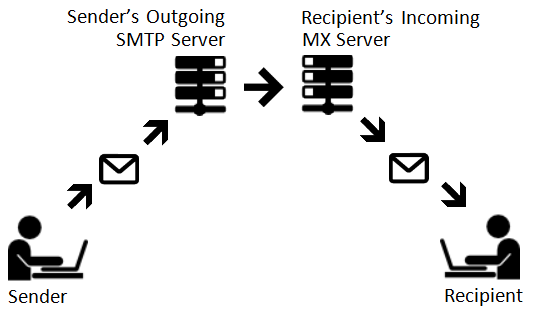SMTP stands for Simple Mail Transport Protocol. To put it simply, it's the language that mail servers and mail clients (e.g. Outlook, Thunderbird, Apple Mail) use to communicate with each other to deliver an email message from the sender through the internet to the recipient. To see how the process works, refer to the diagram below:

After the sender composes an email message and hits 'send', the message leaves the sender's mail client's outbox. Its first stop is the sender's outgoing SMTP server (e.g. smtp.ultrasmtp.com). The sender's outgoing SMTP mail server then attempts to deliver the message to the recipient's incoming mail exchanger (MX). If everything goes well, the recipient's incoming MX server accepts delivery of the message. Finally, the recipient's mail client picks up the message from their incoming MX server, and the recipient receives the message.
Related:
RFC821, RFC2821
Why do Legitimate (non-spam) Email Messages Sometimes Not Reach Their Recipients?

After the sender composes an email message and hits 'send', the message leaves the sender's mail client's outbox. Its first stop is the sender's outgoing SMTP server (e.g. smtp.ultrasmtp.com). The sender's outgoing SMTP mail server then attempts to deliver the message to the recipient's incoming mail exchanger (MX). If everything goes well, the recipient's incoming MX server accepts delivery of the message. Finally, the recipient's mail client picks up the message from their incoming MX server, and the recipient receives the message.
Related:
RFC821, RFC2821
Why do Legitimate (non-spam) Email Messages Sometimes Not Reach Their Recipients?
